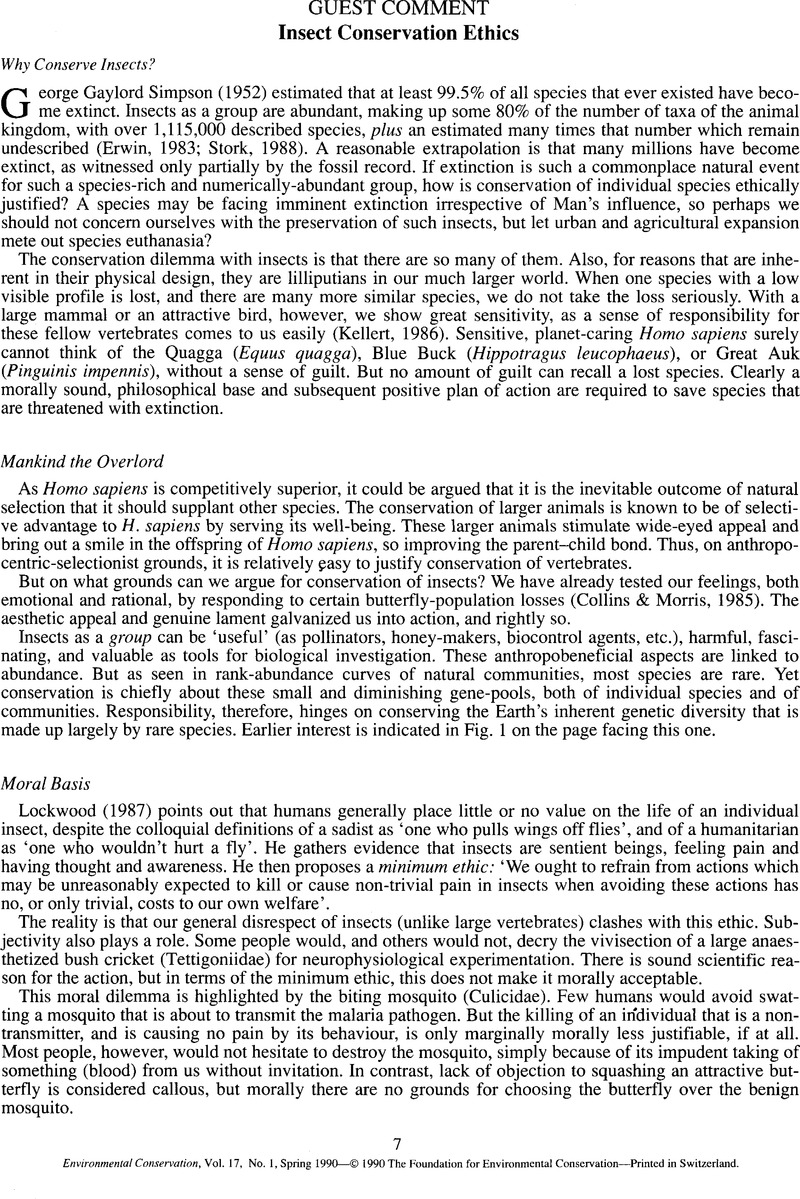Crossref Citations
This article has been cited by the following publications. This list is generated based on data provided by Crossref.
1992.
Environmental Science Theory - Concepts and Methods in a One-World, Problem-Oriented Paradigm.
Vol. 52,
Issue. ,
p.
543.
KELLERT, STEPHEN R.
1993.
Values and Perceptions of Invertebrates.
Conservation Biology,
Vol. 7,
Issue. 4,
p.
845.
1994.
Selecting indicator taxa for the quantitative assessment of biodiversity.
Philosophical Transactions of the Royal Society of London. Series B: Biological Sciences,
Vol. 345,
Issue. 1311,
p.
75.
Fowler, H.G.
1995.
The population status of the endangered Brazilian endemic leaf-cutting ant Atta robusta (Hymenoptera: Formicidae).
Biological Conservation,
Vol. 74,
Issue. 3,
p.
147.
Rodríguez, Jon Paul
Pearson, David L.
and
Barrera, Roberto R.
1998.
A test for the adequacy of bioindicator taxa: Are tiger beetles (Coleoptera: Cicindelidae) appropriate indicators for monitoring the degradation of tropical forests in Venezuela?.
Biological Conservation,
Vol. 83,
Issue. 1,
p.
69.
Lawes, Michael J.
Kotze, D. Johan
Bourquin, Sven L.
and
Morris, Craig
2005.
Epigaeic Invertebrates as Potential Ecological Indicators of Afromontane Forest Condition in South Africa1.
Biotropica,
Vol. 37,
Issue. 1,
p.
109.
Jana, Gautam
Misra, K. K.
and
Bhattacharya, T.
2006.
Diversity of some insect fauna in industrial and non-industrial areas of West Bengal, India.
Journal of Insect Conservation,
Vol. 10,
Issue. 3,
p.
249.
Lemelin, R. Harvey
2007.
Finding Beauty in the Dragon: The Role of Dragonflies in Recreation and Tourism.
Journal of Ecotourism,
Vol. 6,
Issue. 2,
p.
139.
Lemelin, Harvey
2009.
Goodwill hunting: dragon hunters, dragonflies and leisure.
Current Issues in Tourism,
Vol. 12,
Issue. 5-6,
p.
553.
Al-Quran, S.
2012.
Hymenoptera species as pollen visitors ofPlantago arabica(Plantaginaceae) in Jordan.
Acta Botanica Hungarica,
Vol. 54,
Issue. 1-2,
p.
35.
Hvenegaard, Glen t.
Delamere, Thomas A.
Lemelin, Raynald Harvey
Brager, Kathleen
and
Auger, Alaine
2012.
The Management of Insects in Recreation and Tourism.
p.
198.
Shalbaf, Sh.
Seraj, A.A.
Esfandiari, M.
and
Ramazani, L.
2012.
Insect Biodiversity in Karkheh Wild Life Refuge, SW Iran.
Journal of Entomology,
Vol. 9,
Issue. 3,
p.
178.
Hadidian, John
2015.
Wildlife in U.S. Cities: Managing Unwanted Animals.
Animals,
Vol. 5,
Issue. 4,
p.
1092.
Jose, Alex Chembakassery
Sudhin, Puthoor Pattammal
Prasad, Prejith Madasseril
and
Sreejith, Kalpuzha Ashtamoorthy
2018.
Spider Diversity in Kavvayi River Basin, Kerala, Southern India.
Current World Environment,
Vol. 13,
Issue. 1,
p.
100.



